What should one do to create a satisfying and fulfilling career for oneself? Directing a list of world-famous music videos is a remarkable place to start. Following that with some of the most impressive photographs of African wildlife that you are ever likely to see would be enough for most people, but not for Nick Brandt. In addition, he co-founded Big Life Foundation which not only endeavours to protect the fauna and flora through the Amboseli, Tsavo, and Kilimanjaro regions of Kenya and Tanzania but also works to empower local communities. He has not stopped there. In recent years, his work has evolved from documenting wildlife to creating images that make angry, desperate, pleading statements about our planet’s ongoing environmental catastrophe and its impact on the humans, animals, and ecosystems of East Africa.
Before I proceed further, I must lay all my cards openly on the table. If the words that I have written to open this article make me sound like a fan, I freely admit that I unashamedly am. There are certain photographers whom I have encountered through my studies and career that have made me re-evaluate how I look at the medium. Previously, I have written much about the likes of Alec Soth, Paul Graham, Richard I’Anson, Raghubir Singh, and others whose work has had a profound effect on me. Without question, Nick Brandt is part of that select group.
I first encountered Brandt’s work at an exhibition in Seoul, South Korea. My wife and I made the city our home between 2008 and 2012. Its arts scene was vibrant and there were often excellent photography exhibitions going on. The exact details of this particular exhibition’s purpose and location are lost in the mist and fog of my middle-aged brain beyond the fact that it featured multiple artists. I cannot remember who any of the others were, but I can clearly remember the impact that Brandt’s work had on the both of us. As we walked around the exhibition, we were confronted by a huge print of a portrait of an elephant drinking water. The shot seemed so perfect in its execution that it was initially difficult to believe that this was a real elephant. Yet, the rest of the work displayed confirmed this image as no fluke. There was image after image of the most impressive wildlife that East Africa had to offer; all rendered in gorgeous dark sepia tones. I had seen nothing like it before.
Immediately after the exhibition we purchased Brandt’s book A Shadow Falls. The full book, part of the trilogy On This Earth, told a darker tale than the one we saw at the exhibition. As its pages progress, the landscapes in which the featured animals live become more spartan, dustier, and less hospitable for the inhabitants. Inspired and riveted by these superb photographs, we soon got our hands on a copy of the first book, also called On This Earth, before completing the trilogy upon release of its final instalment, Across The Ravaged Land.
Across the Ravaged Land tells a grim tale that foreshadows an evolution in Brandt’s work. The landscapes are dried up and desiccated, and the wildlife often alone. It includes three series of images that are devastating to contemplate. The first shows several animals calcified by the salinity of Lake Natron. It is a natural occurrence but is nonetheless a blunt reminder of the fragility of our planet’s life. The second features park rangers holding recovered poached ivory. The rangers and ivory are arranged to mirror the positions of elephants seen in images from the first two books in the series. They remind us that we should be looking at live animals not sad trophies of the theft of their existence. The third shows three mounted trophies of big game hunting – a lion, a kudu, and a buffalo. Rather than being mounted on the wall of some left-over colonial hunting lodge, they are returned to their natural environment, reminding us that we humans did this. Just before the close of the book, a lion roars towards the heavens. It seems a desperate cry for help.
These three magnificent books would form a body of work that would grace a lifetime of photography. However, Brandt has not rested on his laurels. He followed the On This Earth trilogy with Inherit The Dust from which our banner image, Underpass With Elephants, comes. For the book, previously unpublished photographs of wildlife were printed at life size and placed in locations where, in the past, we would have found the animals. The pictures were left to allow them to become part of the landscape before Brandt returned and photographed them in-situ.
The finished product makes for a damning indictment of what we have done to our world. We have trashed our eco-system and forced wildlife away from their environments; worse, we have sent many species into extinction. We have created urban hellscapes where people are forced to live in unnecessary poverty. None of this needed or needs to happen. Yet, in Underpass With Elephants there is a faint glimmer of hope. A small child standing alone with their back to us appears to look up at the sight of the elephants. I imagine an expression of wonder on their face as they contemplate these extraordinary creatures. It is both a cliché and truism that children hold the key to the future of the planet. It may be a vain hope that the toddler in the picture can be part of that future, but it is a hope nonetheless.
For the rest of this article, I want to focus on Brandt’s latest work entitled The Day May Break. This project is not only loaded with tragedy and pathos, but is also filled with remarkable stories of survival in the most testing of conditions. It is a mature and thoughtful work that represents an artist at the peak of his creative powers. The project features both people and animals who are survivors. The animals were rescued from cruelty, environmental issues, poisoning, land encroachment, and, perhaps grimmest of all, the illegal wildlife trade. The people have escaped from catastrophic environmental problems, such as drought and flooding, others from the disastrous impact of Cyclone Idai. Every one of the stories is heart-wrenching, but they are all survivors. They have endured in the most challenging of circumstances.
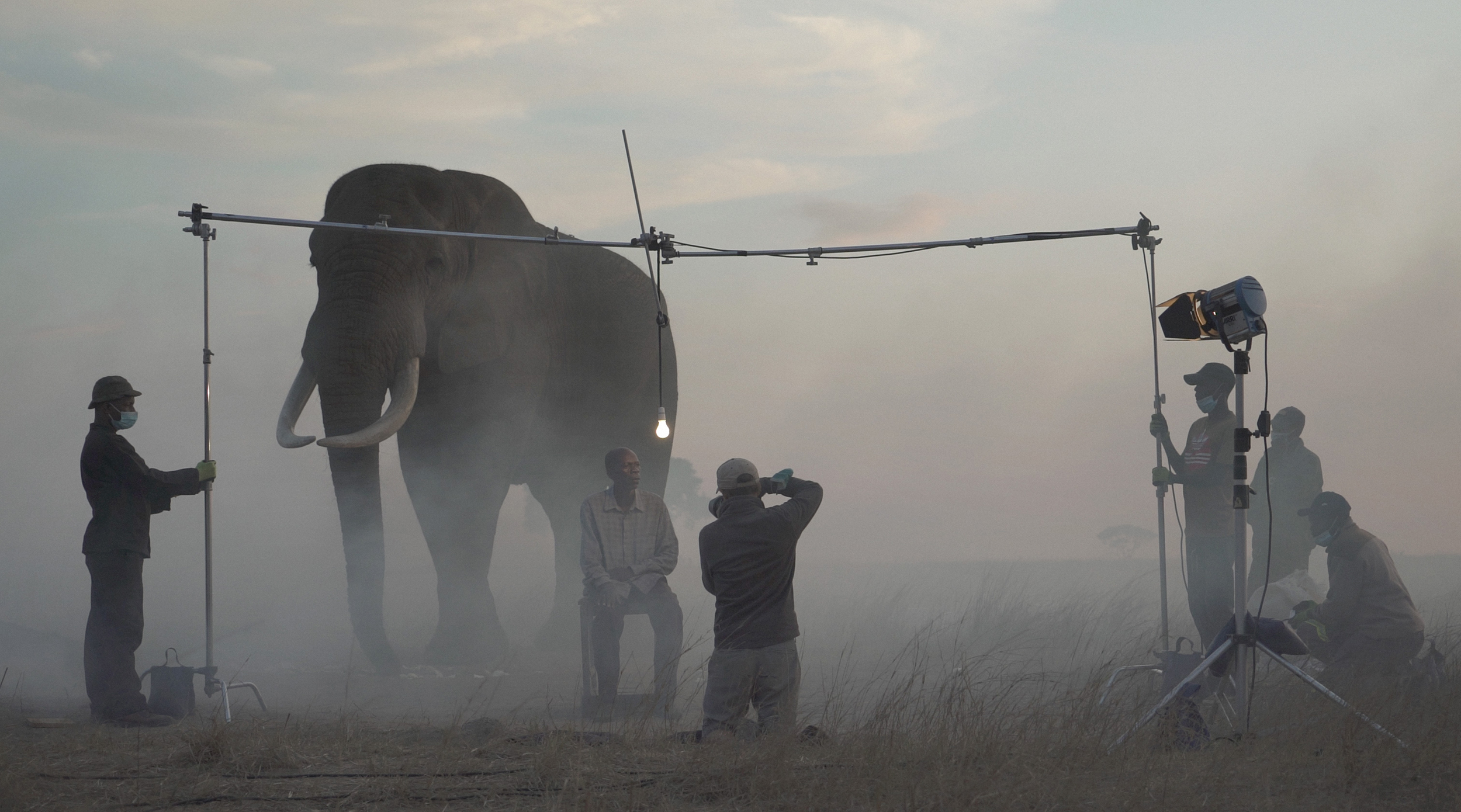
What elevates this project from ‘just’ excellence into the realms of being special is the attention to detail and the process that was employed in its making. As you can see from the image The making of The Day May Break, the human and animal subjects were photographed in the same single frame. Apart from the lighting and an environment-friendly fog machine, there were no special effects or gadgetry in the set-up. This created a remarkable juxtaposition between human and animal that emphasises that it is not only wildlife that are suffering because of the climate catastrophe. Our fellow human beings are also on the receiving end of its consequences.
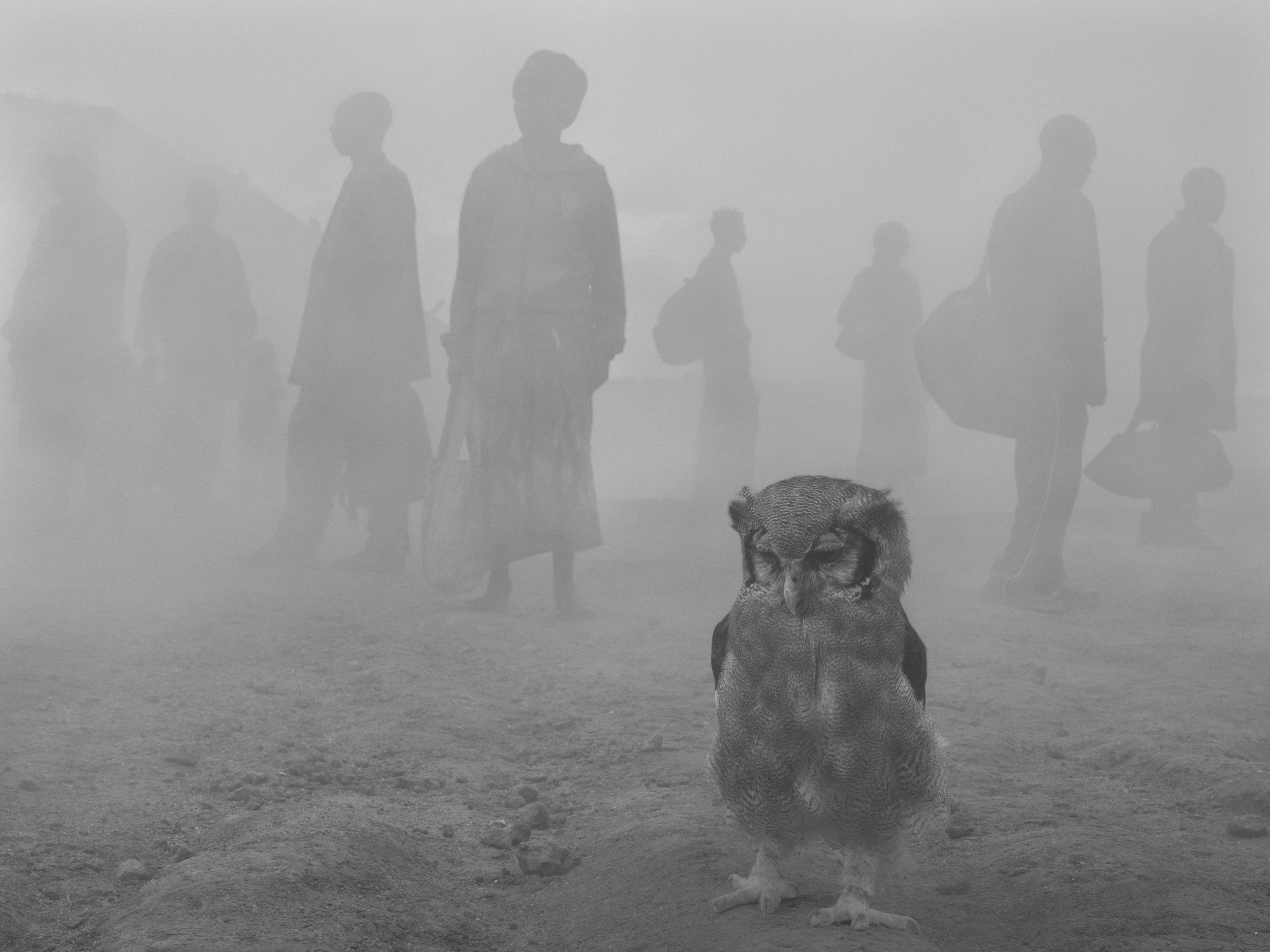
If I was forced to choose, I would probably admit that Harriet and People in Fog is my favourite of the images from the project. Harriet is Giant Eagle Owl who was rescued as a chick when deforestation destroyed her habitat. She has lived at Zimbabwe’s Kuimba Shiri bird park for thirty-five years. In this haunting photograph, she stands on barren earth in front of anonymous people in fog. The people are rendered into ghosts by their namelessness and the mist shrouding them. Harriet stands, looking almost schoolmasterly. Her face turned down towards the ground. It is easy to anthropomorphise Harriet, something I usually try to avoid, but here it seems appropriate. She seems to lament the struggles of the lost people behind her. The photographed is charged with emotion and demands that I ask myself, “What have we done?”
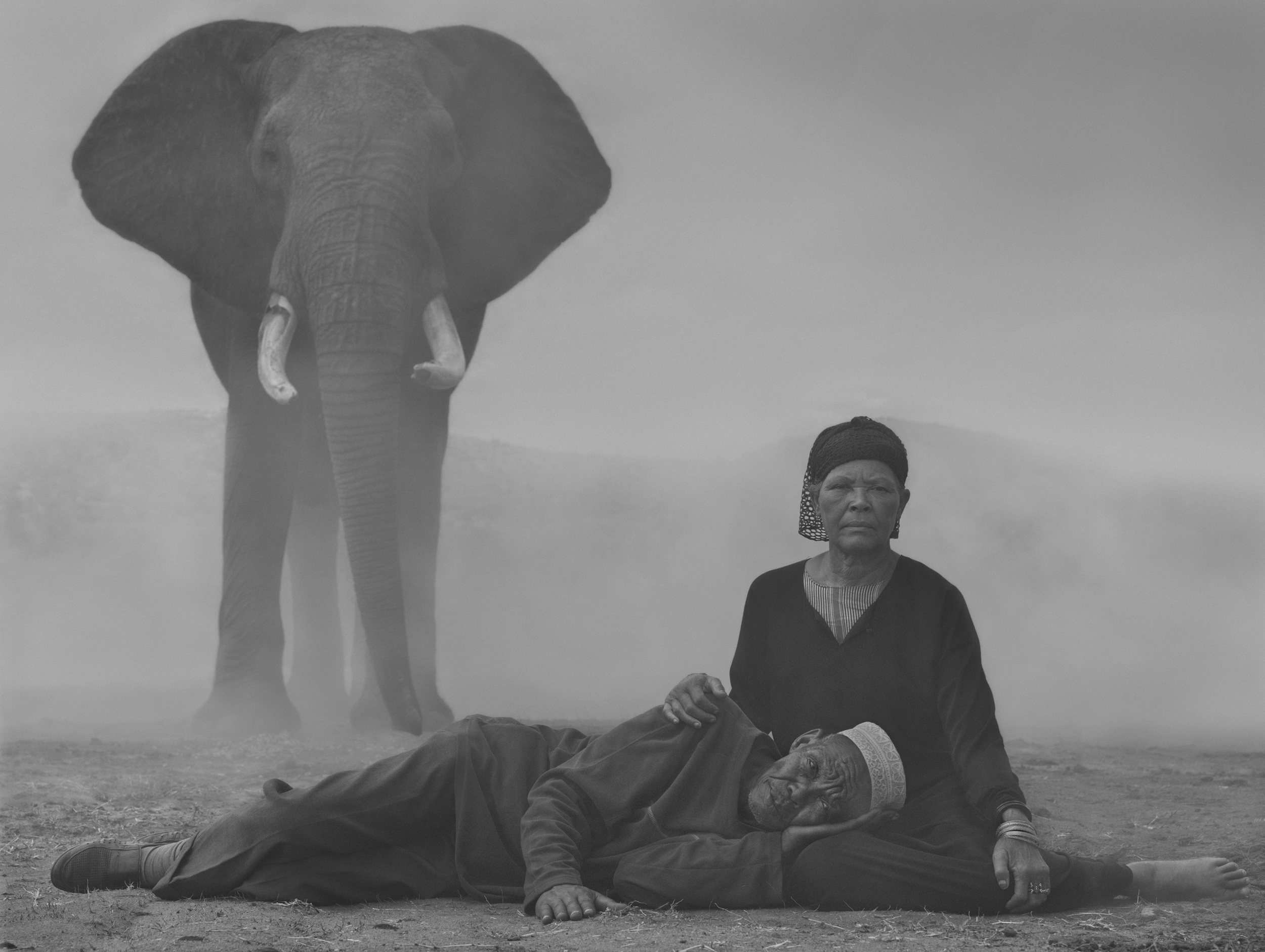
Like the previous image, Fatima, Ali and Bupa burns to your core. Fatuma and Ali spent much of their lives as nomadic livestock herders but then lost their animals and livelihood due to drought. They only avoided starvation by abandoning their rural lives and moving to a town. Bupa was rescued from being killed in an elephant cull in the late eighties. I find the very idea of an elephant cull as mystifying and absurd as I do abhorrent.
The image is made by its wonderful composition. Ali and Fatuma, who are beautifully arranged, force us to consider the human consequences of our neglect. Bupa, looming behind, demands that we also recognise that the land does not only belong to us.
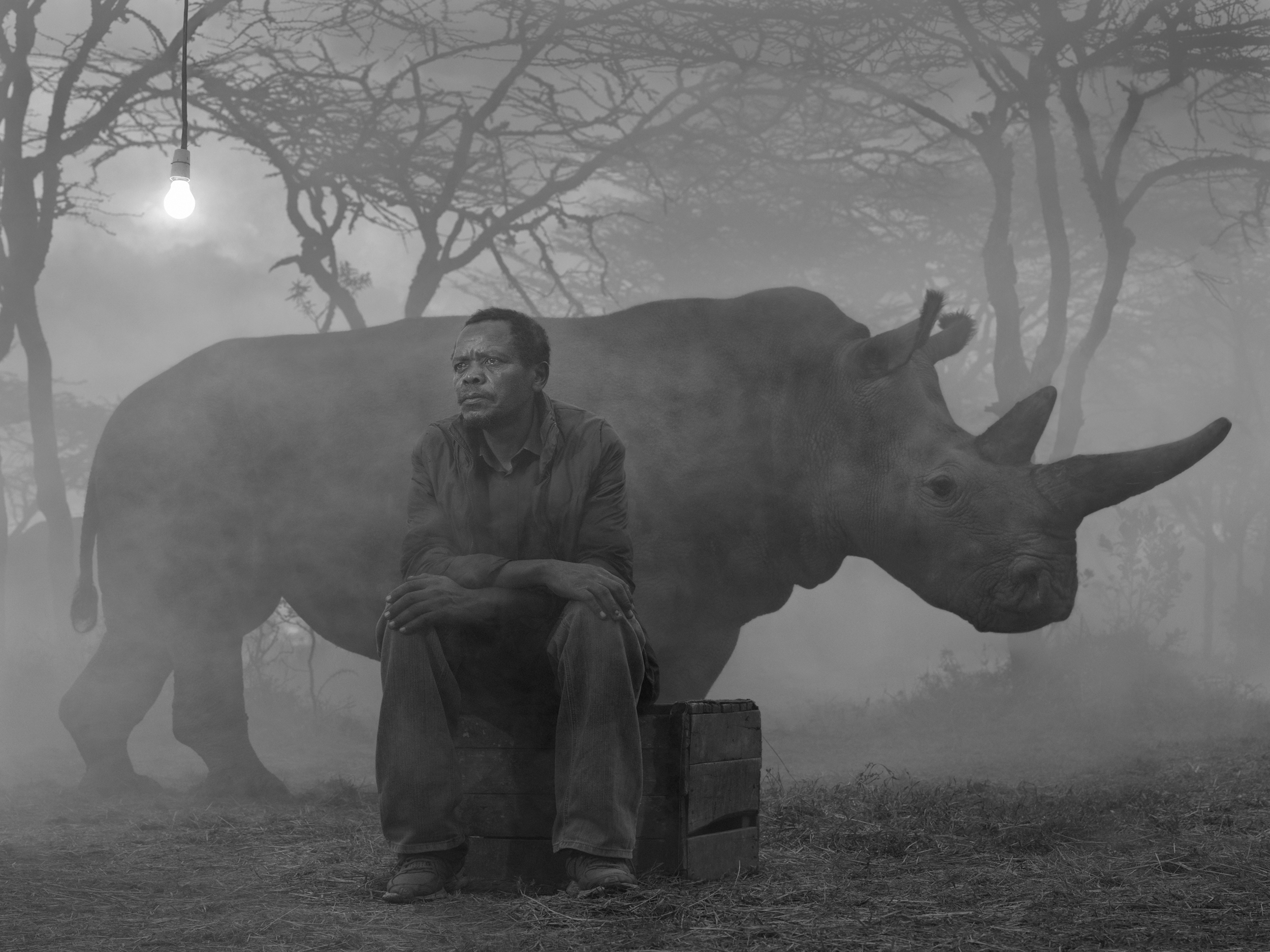
Setting aside the composition and presentation of our final image, James and Fatu, Kenya, simply knowing Fatu’s context should make every single one of us stop and consider what we have collectively done. She is one of the last two Northern White Rhinos. That’s it – two left, and then they are done, never to roam the Earth again. Efforts are being made with IVF to bring the species back from the brink. Only time will tell us if they are successful.
James, formerly a successful farmer, was bankrupted after years of drought. Now he works as a day labourer. His expression seems to mix the sadness of someone who has lost so much with the determination of a man who will not give up, a man who refuses to be defeated by life.
The whole image is infused with the calamities that have befallen both James and Fatu. However, the light from the dangling bulb perhaps hints a little hope. Perhaps James’s stoicism and determination will see him find better employment and Fatu will be rewarded with a calf and a possible renewal of her species.
When I began to reach the conclusion of this article, I became concerned that I might, as I sometimes do, be indulging in a bit of hyperbole. Am I exaggerating the scale of the environmental catastrophe? Am I being overly enthusiastic about the quality of Brandt’s images because I am a fan? Although you are more than capable of deciding on your own answers to these questions, I am confident that the answer to both questions is no. The crisis state of our planet is the single biggest issue facing us all today. There are no ifs and no buts. It is one of photography’s unique gifts that this fact can be shown and represented in so many different ways. I hope you will agree that you will find few, if any, voices that speak with such visual eloquence as that of Nick Brandt. He demands that we look at the photos, understand what we have done, and act before all is lost.
Rob Wilson will be donating his fee for this article to Big Life Foundation.
NICK BRANDT



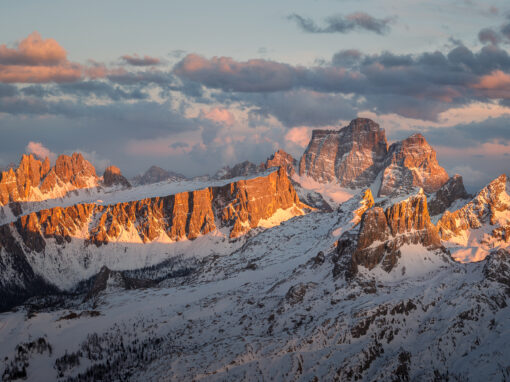
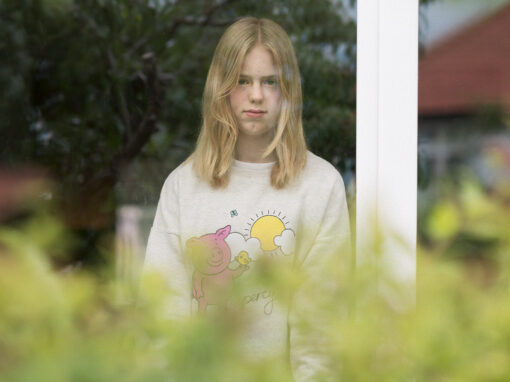
Ross Duncan
October 22, 2021 at 01:12
A fascinating and informative read, thank you for introducing me to the work of Nick Brandt.
Leo Germano
October 30, 2021 at 01:02
Astonishing, Important, Revelational… Thank you…. Nick Brandt occupies an impressive niche in my understanding of the world of Photography.